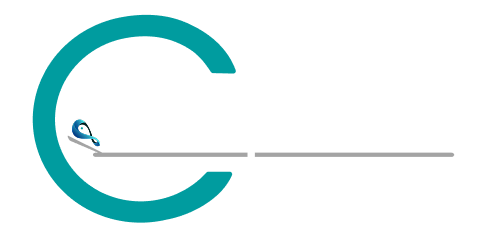DICOM VIEWER FEATURES
 Window Level – Modify contrast and brightness
Window Level – Modify contrast and brightness Pan – Move the image within the viewport to explore different regions without changing zoom or scale
Pan – Move the image within the viewport to explore different regions without changing zoom or scale Pan Rotate – Rotate the image for better orientation
Pan Rotate – Rotate the image for better orientation- Align Left – Instantly position the image on the left side of the viewport for structured comparison
- Align Right – Position the image on the right side of the viewport for side-by-side viewing
- Align Center – Reset the image to the center for a balanced and default view
- Align Left Lock – Keep the image fixed on the left side while navigating through other images
- Align Right Lock – Keep the image fixed on the right side for consistent viewing during analysis
 Zoom – Magnify medical images to examine fine details and enhance clarity during analysis
Zoom – Magnify medical images to examine fine details and enhance clarity during analysis Fit to Screen – Adjusts the image size to fit perfectly within the viewport for an optimal full view
Fit to Screen – Adjusts the image size to fit perfectly within the viewport for an optimal full view Zoom Selection – Focus on a selected region by zooming into a specific area for closer inspection
Zoom Selection – Focus on a selected region by zooming into a specific area for closer inspection Magnifier – Zoom into a selected area of the image with a dedicated magnifying lens
Magnifier – Zoom into a selected area of the image with a dedicated magnifying lens Magnify Probe – Hover over any region to instantly enlarge it for closer inspection
Magnify Probe – Hover over any region to instantly enlarge it for closer inspection Capture – Take snapshots of the current image view for documentation and reporting
Capture – Take snapshots of the current image view for documentation and reporting.png) Cine – Play image slices in sequence like a video for dynamic review
Cine – Play image slices in sequence like a video for dynamic review Reset View – Restore the image to its default orientation, zoom, and position
Reset View – Restore the image to its default orientation, zoom, and position Image Overlay – Superimpose additional images or reference layers to compare structures
Image Overlay – Superimpose additional images or reference layers to compare structures Calibration – Set measurement scales accurately for precise calculations
Calibration – Set measurement scales accurately for precise calculations DICOM Tag Browser – View detailed DICOM metadata including patient and study information
DICOM Tag Browser – View detailed DICOM metadata including patient and study information Ultrasound Directional – Display orientation markers on ultrasound images
Ultrasound Directional – Display orientation markers on ultrasound images- Enter Full screen – Expand the viewer to occupy the entire screen
 Hotkeys – Use keyboard shortcuts to quickly access tools and functions
Hotkeys – Use keyboard shortcuts to quickly access tools and functions
- MPR (Multiplanar Reconstruction) – Reconstructs medical images into multiple planes
 Sagittal View – Displays vertical slices dividing the body into left and right sections
Sagittal View – Displays vertical slices dividing the body into left and right sections Axial View – Shows cross-sectional slices from top to bottom
Axial View – Shows cross-sectional slices from top to bottom Coronal View – Presents vertical slices dividing the body into front and back
Coronal View – Presents vertical slices dividing the body into front and back Crosshairs – Provides reference markers across different planes in MPR
Crosshairs – Provides reference markers across different planes in MPR Show Reference Lines – Display cross-reference lines across different planes
Show Reference Lines – Display cross-reference lines across different planes Spin – Enables 360° rotation of 3D reconstructed images
Spin – Enables 360° rotation of 3D reconstructed images 3D Four Up – Shows four synchronized 3D views at once
3D Four Up – Shows four synchronized 3D views at once 3D Main – Focuses on the main 3D reconstruction for precise examination
3D Main – Focuses on the main 3D reconstruction for precise examination Axial Primary – Highlights the axial plane as the main reference
Axial Primary – Highlights the axial plane as the main reference 3D Only – Displays only the 3D reconstruction with Cutting Edges
3D Only – Displays only the 3D reconstruction with Cutting Edges 3D Primary – Sets the 3D view as the primary window
3D Primary – Sets the 3D view as the primary window Frame View – Arranges images into organized frames for comparison
Frame View – Arranges images into organized frames for comparison 3D Rotate – Rotate 3D reconstructions freely in any direction
3D Rotate – Rotate 3D reconstructions freely in any direction
 Length Tool – Measures the distance between two points
Length Tool – Measures the distance between two points Angle – Measure the angle formed between two intersecting lines
Angle – Measure the angle formed between two intersecting lines Cobb Angle – Specialized tool for measuring spinal curvature
Cobb Angle – Specialized tool for measuring spinal curvature Bidirectional – Calculate both horizontal and vertical dimensions
Bidirectional – Calculate both horizontal and vertical dimensions Rectangle – Draw rectangular regions of interest (ROI)
Rectangle – Draw rectangular regions of interest (ROI) Circle – Mark circular ROIs for focused measurement
Circle – Mark circular ROIs for focused measurement Freehand ROI – Outline custom-shaped regions
Freehand ROI – Outline custom-shaped regions Spline ROI – Create smooth, curved ROIs
Spline ROI – Create smooth, curved ROIs Livewire Tool – Semi-automated ROI drawing
Livewire Tool – Semi-automated ROI drawing Height Difference – Measure vertical displacement
Height Difference – Measure vertical displacement Text – Add custom notes or labels directly on the image
Text – Add custom notes or labels directly on the image Probe – Display pixel intensity values at specific points
Probe – Display pixel intensity values at specific points Pencil – Draw freehand annotations or markings
Pencil – Draw freehand annotations or markings Polyline – Create connected line series to measure length
Polyline – Create connected line series to measure length Flatfoot – Dedicated measurement tool for flatfoot angle
Flatfoot – Dedicated measurement tool for flatfoot angle CTR (Cardio-Thoracic Ratio) – Calculate heart size to thoracic width
CTR (Cardio-Thoracic Ratio) – Calculate heart size to thoracic width Goniometry – Assess joint angles for orthopedic studies
Goniometry – Assess joint angles for orthopedic studies Vertebra Angle – Measure vertebral alignment in spinal studies
Vertebra Angle – Measure vertebral alignment in spinal studies TT-TG Distance – Orthopedic measurement for patellofemoral alignment
TT-TG Distance – Orthopedic measurement for patellofemoral alignment Ruler – General-purpose linear measurement tool
Ruler – General-purpose linear measurement tool Closed Polygon – Create multi-point closed ROIs
Closed Polygon – Create multi-point closed ROIs Ellipse ROI – Define oval regions of interest
Ellipse ROI – Define oval regions of interest Arrow Annotate – Add arrows to highlight specific regions
Arrow Annotate – Add arrows to highlight specific regions Annotation Eraser – Remove added annotations or markings
Annotation Eraser – Remove added annotations or markings
 Change Layout – Switch between different viewport arrangements
Change Layout – Switch between different viewport arrangements Default Layout – Restore the standard viewing arrangement
Default Layout – Restore the standard viewing arrangement Custom Layout – Personalize the viewport arrangement
Custom Layout – Personalize the viewport arrangement Layout 1x1 – Show a single image in the viewport
Layout 1x1 – Show a single image in the viewport Layout 1x2 – Divide the viewport into two panels side by side
Layout 1x2 – Divide the viewport into two panels side by side Info Labels – Display key image information on the viewport
Info Labels – Display key image information on the viewport
 Sync – Keep multiple viewports in harmony for side-by-side analysis
Sync – Keep multiple viewports in harmony for side-by-side analysis- Scrolling Synchronize – Scroll through slices simultaneously
- Windowing Sync – Apply brightness and contrast adjustments uniformly
- Pan/Zoom Sync – Move or zoom images together for coordinated viewing
- Rotate Sync – Rotate images in sync to maintain consistent orientation
 Rotate Right – Rotates the image 90° clockwise
Rotate Right – Rotates the image 90° clockwise Rotate Left – Rotates the image 90° counterclockwise
Rotate Left – Rotates the image 90° counterclockwise Flip Horizontal – Mirrors the image along the vertical axis
Flip Horizontal – Mirrors the image along the vertical axis Flip Vertical – Flips the image upside down along the horizontal axis
Flip Vertical – Flips the image upside down along the horizontal axis Clear Transform – Resets all rotations and flips instantly
Clear Transform – Resets all rotations and flips instantly Reset Selected – Revert changes made to the selected image
Reset Selected – Revert changes made to the selected image Reset Active – Restore the currently active image to original state
Reset Active – Restore the currently active image to original state Reset All – Remove all annotations and reset every image to default
Reset All – Remove all annotations and reset every image to default
- Save – Preserve your work and selected images for future reference
 Mark Image as Key Object – Tag a specific image as a key object
Mark Image as Key Object – Tag a specific image as a key object Save Study Key Object – Save all marked key objects from the study
Save Study Key Object – Save all marked key objects from the study
- DICOM MPEG-2 – High-quality medical video format
- DICOM MPEG-4 – Efficient video compression standard
- DICOM H264 – Advanced video format for clear playback
- DICOM Multiframe Support – Plays medical image sequences in Cine mode

